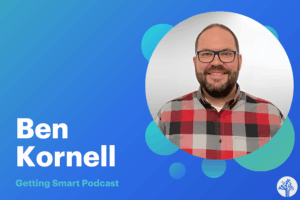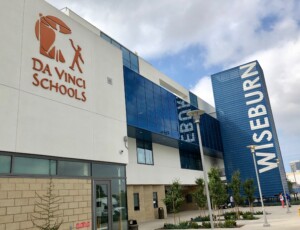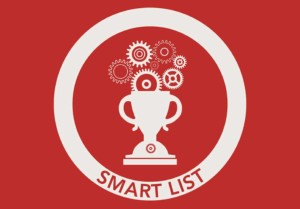How Can We Personalize Rigorous Projects?

By Elina Alayeva
Project-based learning (PBL) is an incredibly useful way to prepare students for the world—especially today’s world. By definition, project-based learning is an approach that allows students to gain knowledge and skills as they investigate and respond to an engaging and complex question. At their most effective, projects are inquiry-based and focused on real-world issues.
This is exactly the kind of work students will be called upon to do once they graduate. With our national freelance economy on the rise, the opportunities for project-based work are increasing significantly. According to one study, over 40% of America’s workforce will be self-employed by 2020. It has never been more important for students to enter the workforce with the ability to perform high-intensity, short-term work aligned to the needs of a client.
Given the importance of preparing students for a world in which they will be asked to manage complex projects, we must ask ourselves a critical question: How can we prepare all students for this level of highly independent project-based work?
We’ve all seen—or experienced, as students—a project that isn’t rigorous. Sometimes a project asks students to do too much, working beyond their skill level. Alternatively, a project can allow too much leeway in form and content, letting students skate to completion without challenging themselves. In many cases, projects acknowledge the existence of standards without supporting students in reaching them. It’s easy for the activity of creating the product (the poster, video, computer program or anything else) to distract students (and adults!) from deep inquiry.
How do we assure project-based learning is rigorous, standards-based, and meets the needs of every young person? A “personalized project” sounds like a seamless marriage between two best practices—the ideal way to prepare all students to engage in the freelance economy. It’s a term we’ve seen in many next-gen school models, and we know that many practitioners want to foster it in schools and classrooms.
But what does it mean to personalize a project? Is true personalization in a project-based setting even possible? Within our growing network of new, competency-based high schools, we’ve been having robust conversations about the bridge between these two approaches. Are they mutually exclusive? How might they fit together? Can rigorous project-based work lead to consistent inquiry and revisions based on students’ individual growth areas? How can that be personalized, particularly if students are working in groups?
One way to bridge these two paradigms is to think about project-based learning as a progression in a competency-based system. Each student can develop a unique cluster of skills over the course of multiple projects, with built-in revision cycles for each. We often imagine projects as monolithic, end-of-term summations of learning. How can we make projects less finite, linking them together in a year-long sequence and allowing students to revisit and revise?
Several schools launched as part of Carnegie Corporation of New York’s Opportunity by Design initiative, and with Springpoint’s support, are trying to make this happen. At the Denver School of Innovation and Sustainable Design, students individually keep track of the competencies they need to develop, and they focus on those when working on group and individual projects.
Similarly, at Prince George’s County Internationals High Schools in Langley Park and Largo, which both serve recent immigrants and English language learners, projects are personalized to allow students with varying degrees of proficiency to play a role. Some students create infographics, for example, while others with stronger English skills carry the written portion of the project.
Another option is to use projects as assessment anchors inside of an overarching personalized learning experience. Valuable, authentic projects with definitive limitations can assess and address where students stand in their learning process. As students move through course content at an individualized pace, teachers can assign projects during “pause periods,” where high-intensity, bounded projects are assigned either as individual experiences or group projects.
In any school design endeavor, the biggest challenge is facilitating experiences that are tailored to each student’s zone of proximal development while still preparing them for rigorous work post-graduation. Designing projects that allow access points for all students will involve rethinking some of our traditional notions of what projects can be. How can we make projects more adaptive, pushing students at all skill levels to engage in deep inquiry? Given the type of work our graduates will be asked to do, this is more important now than ever.
This blog is also part of “It’s a Project-Based World” series. To learn more and contribute a guest post for the series, see the Project-Based World page. Join in the conversation at #projectbased.
For more, see:
- Promising Practices in Equity and Project-Based Learning
- What’s Next? Personalized, Project-Based Learning
- 5 Myths of Project-Based Learning, Dissected and Debunked
Elina Alayeva is Director of National Strategy at Springpoint. Follow them on Twitter: @springpointEDU.
Stay in-the-know with all things EdTech and innovations in learning by signing up to receive the weekly Smart Update. This post includes mentions of a Getting Smart partner. For a full list of partners, affiliate organizations and all other disclosures please see our Partner page.






0 Comments
Leave a Comment
Your email address will not be published. All fields are required.